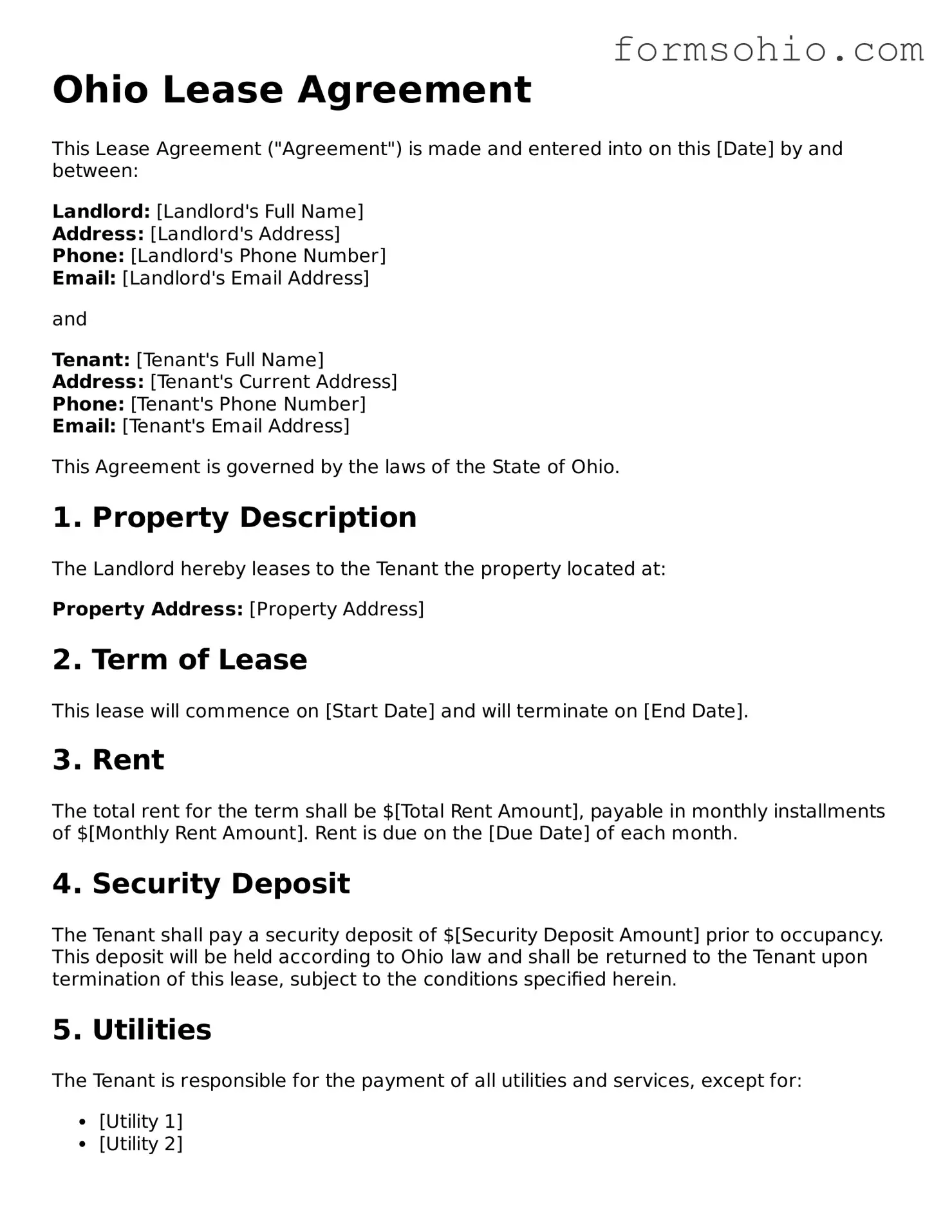Ohio Lease Agreement
This Lease Agreement ("Agreement") is made and entered into on this [Date] by and between:
Landlord: [Landlord's Full Name]
Address: [Landlord's Address]
Phone: [Landlord's Phone Number]
Email: [Landlord's Email Address]
and
Tenant: [Tenant's Full Name]
Address: [Tenant's Current Address]
Phone: [Tenant's Phone Number]
Email: [Tenant's Email Address]
This Agreement is governed by the laws of the State of Ohio.
1. Property Description
The Landlord hereby leases to the Tenant the property located at:
Property Address: [Property Address]
2. Term of Lease
This lease will commence on [Start Date] and will terminate on [End Date].
3. Rent
The total rent for the term shall be $[Total Rent Amount], payable in monthly installments of $[Monthly Rent Amount]. Rent is due on the [Due Date] of each month.
4. Security Deposit
The Tenant shall pay a security deposit of $[Security Deposit Amount] prior to occupancy. This deposit will be held according to Ohio law and shall be returned to the Tenant upon termination of this lease, subject to the conditions specified herein.
5. Utilities
The Tenant is responsible for the payment of all utilities and services, except for:
6. Maintenance and Repairs
The Tenant agrees to keep the premises in good condition. The Landlord is responsible for repairs, except for those caused by the Tenant's negligence.
7. Use of Premises
The Tenant shall use the premises solely for residential purposes. No illegal activities shall be conducted on the property.
8. Governing Law
This Agreement shall be governed by the laws of the State of Ohio.
9. Signatures
By signing below, both parties agree to the terms and conditions of this Lease Agreement.
Landlord Signature: _________________________ Date: ____________
Tenant Signature: _________________________ Date: ____________
This Lease Agreement is a binding legal document. Both parties should retain a copy for their records.
